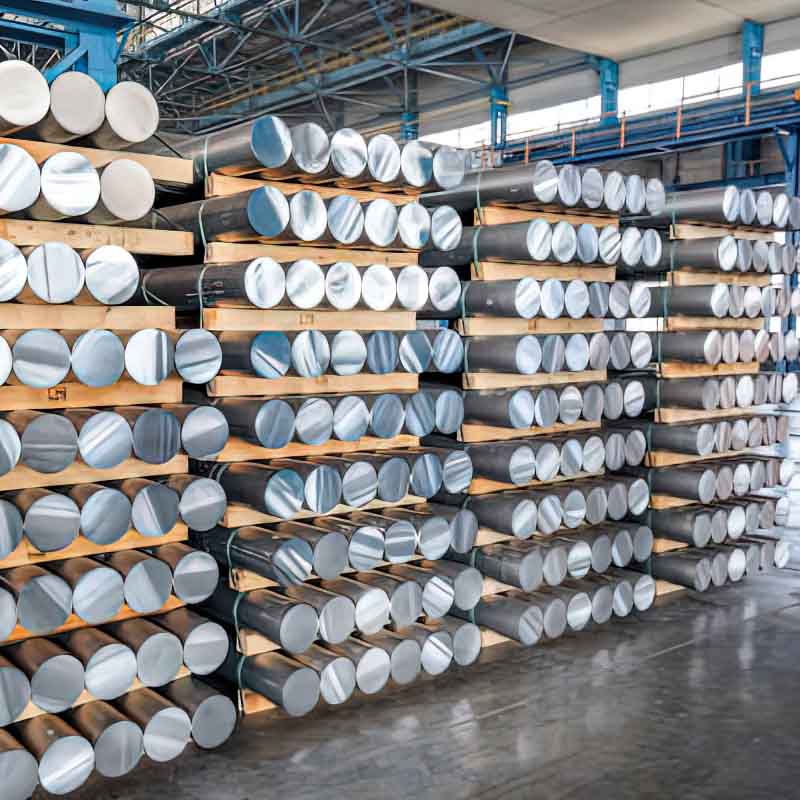Aluminum vs Other Metals: Why Choose Aluminum

Aluminum has emerged as a remarkable material in various industries, and this article aims to dissect the reasons behind its preference over other metals. We'll explore its unique properties, diverse applications in the form of aluminum products, and the crucial role of aluminum profiles in structural designs.
1. Introduction
1.1 The Metal Conundrum
Highlight the vast array of metals available and the importance of making the right choice for different applications. Pose the question: Why is aluminum increasingly favored?
1.2 Purpose of the Article
To comprehensively analyze aluminum's advantages, comparing it with common metals, and showcase how it outperforms them in multiple aspects, guiding consumers and industries in their material selection.
2. Properties of Aluminum
2.1 Lightweight Champion
Elaborate on aluminum's low density, which makes it significantly lighter than many metals like steel and iron. Illustrate with examples of how this property benefits transportation, from aircraft components to lightweight vehicles.
2.2 Durability Beyond Expectations
Despite its lightness, discuss aluminum's resistance to corrosion and wear. Explain how it forms a protective oxide layer, ensuring longevity in harsh environments, such as marine and industrial settings.
2.3 Excellent Thermal and Electrical Conductivity
Describe how aluminum conducts heat and electricity efficiently, making it indispensable in heat exchangers, electrical wiring, and electronics cooling systems.
2.4 Aesthetic Versatility
Showcase the ability to modify aluminum's appearance through various finishes, from sleek polished surfaces to vibrant anodized colors, catering to different design aesthetics.
3. Aluminum Profiles: Engineering Marvels
3.1 Understanding the Basics
Define aluminum profiles and their significance as the building blocks of many structures. Explain how they are manufactured through extrusion processes.
3.2 Customizability at Its Finest
Highlight the flexibility in shaping aluminum profiles to meet specific design requirements. Whether it's complex architectural frames or modular furniture components, the possibilities are endless.
3.3 Structural Integrity and Efficiency
Demonstrate how well-designed aluminum profiles can provide robust support while minimizing material usage, leading to cost-effective and sustainable solutions.
4. Aluminum Products in Daily Life
4.1 Household Heroes
Enumerate common household items made of aluminum, like kitchen utensils, window frames, and interior décor pieces. Explain how aluminum's properties enhance their functionality and aesthetics.
4.2 Transportation Titans
Explore aluminum's use in automobiles, trains, and airplanes. Discuss how it contributes to fuel efficiency, performance, and overall safety in the transportation sector.
4.3 Industrial Backbones
Highlight aluminum's role in machinery, equipment, and construction. From factory conveyor belts to building facades, it offers strength, durability, and ease of installation.
5. Comparison with Other Metals
5.1 Aluminum vs Steel
Contrast aluminum's lightweight and corrosion resistance with steel's higher strength and rigidity. Analyze where each metal excels and the trade-offs in different applications.
Comparison Items |
Aluminum |
Steel |
Density |
~2.7 g/cm³, light, suits weight-sensitive apps. |
~7.8 g/cm³, heavy, good for heavy-duty. |
Strength |
Strong for its weight, suits various loads. |
High strength (esp. alloys), used in building. |
Corrosion Resistance |
Forms oxide layer, may need coating. |
Rusts without protection, galvanized to resist. |
Cost |
Usually cost-effective. |
Can be pricier based on grade. |
Formability |
Easily made into complex shapes. |
Less formable, needs more energy. |
5.2 Aluminum vs Copper
Compare aluminum's cost-effectiveness and conductivity with copper's superior electrical conductivity. Examine their roles in electrical systems and the factors influencing material choice.
Comparison Items |
Aluminum |
Copper |
Density |
~2.7 g/cm³, low for light products. |
~8.96 g/cm³, heavy, for stable apps. |
Conductivity |
Good for heat & some elec. |
Exceptionally high, top for wiring. |
Corrosion Resistance |
Forms oxide layer, fair res. |
Moderate, may oxidize, patina. |
Cost |
Cost-effective due to abund. |
Expensive, limited reserves. |
Formability |
Easily extruded, complex shapes. |
Malleable, less intricate than alloy. |
5.3 Aluminum vs Titanium
Evaluate aluminum's availability and affordability against titanium's extreme strength and high-temperature resistance. Discuss niche applications where titanium's unique properties are indispensable.
Comparison Items |
Aluminum |
Titanium |
Density |
~2.7 g/cm³, lightweight, good for portable equip. frames. |
~4.5 g/cm³, relatively heavy but lighter than many metals. |
Strength |
Good strength for its weight, suitable for structural apps. |
High strength even at high temps, ideal for aerospace. |
Corrosion Resistance |
Natural oxide layer resists corrosion, can be improved. |
Outstanding, resistant to seawater, acids, etc., great for marine and chem. ind. |
Cost |
Affordable in material and manufacturing, widely used. |
Expensive due to complex processes, for specialized apps. |
Formability |
Easily extruded into various shapes, flexible. |
Less formable, needs special techniques but possible. |
6. Future Prospects and Sustainability
6.1 Technological Advancements
Look ahead to emerging technologies that will further enhance aluminum's properties, such as nanotechnology and advanced alloy development.
6.2 Recycling and Environmental Impact
Emphasize aluminum's recyclability and its positive contribution to reducing waste and energy consumption. Discuss how recycling initiatives are shaping the future of aluminum production.
6.3 Market Trends and Opportunities
Analyze the growing demand for aluminum products and the potential for new markets and applications. Identify areas where innovation can drive growth.
7. Conclusion
7.1 Recap of Key Points
Summarize the outstanding properties of aluminum, its advantages over other metals, and the wide-ranging applications of aluminum products and aluminum profiles.
7.2 The Clear Choice
Reiterate why aluminum is a top contender in material selection, offering a unique blend of performance, versatility, and sustainability.
7.3 Acknowledgment of aluinno's Contribution
At aluinno, we have been dedicated to harnessing the full potential of aluminum. Our continuous innovation and commitment to quality have led to the production of high-quality aluminum products. We look forward to furthering the use and development of this incredible material.


 En
En



 Location:
Location:
















